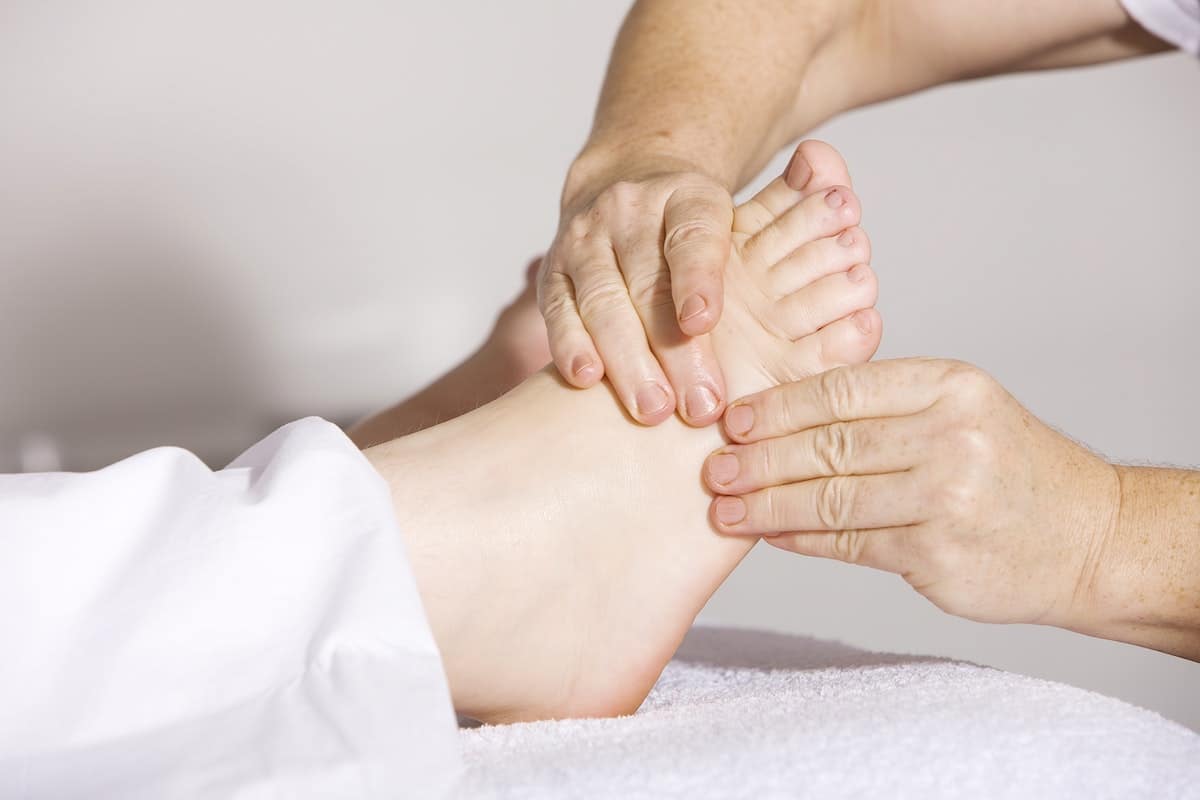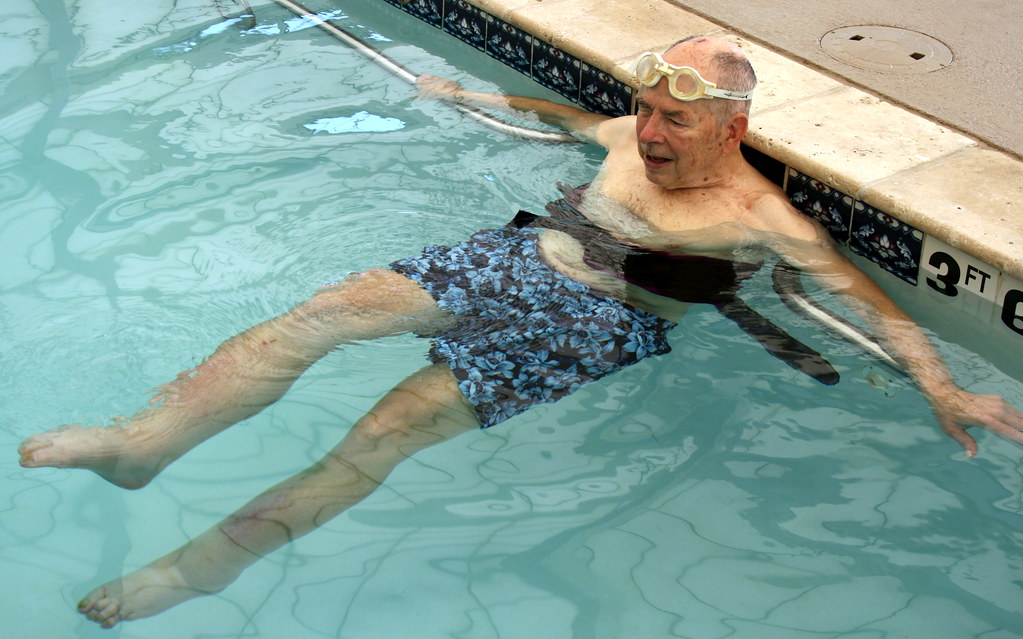
-
Hydrotherapy can alleviate symptoms of diabetic neuropathy by improving circulation and nerve function.
-
Contrast bath therapy, aquatic exercises, and whirlpool therapy are common hydrotherapy techniques beneficial for neuropathy relief.
-
Regular hydrotherapy sessions can lead to better mobility, reduced pain, and improved quality of life for those with diabetic neuropathy.
-
Creating a personalized hydrotherapy routine should be done under professional guidance to ensure safety and effectiveness.
-
Home-based hydrotherapy options are available for those unable to access professional facilities.
Understanding Diabetic Neuropathy and its Impact
Diabetic neuropathy is a type of nerve damage that can occur in individuals with diabetes. It’s caused by high blood sugar levels, which can injure the walls of the tiny blood vessels that nourish your nerves, especially in the legs.
Those living with diabetic neuropathy often face daily challenges. The condition can cause tingling, pain, or numbness, particularly in the hands and feet. This can lead to difficulty in performing everyday tasks and can significantly impair one’s quality of life.
But there’s hope. One of the ways to manage these symptoms is through hydrotherapy – a therapeutic approach that involves the use of water for pain relief and treatment.
Defining Diabetic Neuropathy
Diabetic neuropathy is a serious and common complication of diabetes. It occurs when high blood sugar levels damage the nerves throughout the body, most often affecting the extremities. Without proper management, it can lead to a range of issues, from loss of sensation to digestive problems.
Common Symptoms and Challenges
Individuals with diabetic neuropathy may experience various symptoms, such as:
-
Numbness or reduced ability to feel pain or temperature changes
-
A tingling or burning sensation
-
Sharp pains or cramps
-
Increased sensitivity to touch — for some people, even a bedsheet’s weight can be painful
-
Muscle weakness
These symptoms can be more than just uncomfortable—they can interfere with daily activities, increasing the risk of injury and affecting mobility.
How Diabetic Neuropathy Affects Daily Life

Living with diabetic neuropathy means facing the reality that simple tasks may become challenging. The loss of sensation can make it difficult to feel temperature changes or notice cuts and sores on the feet, which can lead to infections. Additionally, the pain and discomfort can disrupt sleep and decrease one’s overall quality of life.
The Science Behind Hydrotherapy for Neuropathy
Hydrotherapy, also known as water therapy, uses water’s physical properties, such as temperature and pressure, to stimulate blood circulation and treat various health conditions, including diabetic neuropathy.
Principles of Water Therapy

Water therapy works on the principle of hydrostatic pressure, buoyancy, and temperature. The buoyancy reduces stress on the joints and muscles, hydrostatic pressure enhances blood circulation, and the water temperature can soothe pain and reduce inflammation.
Hydrotherapy’s Effects on the Nervous System
Hydrotherapy can have a positive impact on the nervous system. Warm water can help relax muscles and increase nerve function, while cold water can reduce inflammation and numb pain. The combination of these effects can help mitigate the symptoms of diabetic neuropathy.
Moreover, the sensory stimulation from water can help improve proprioception, which is often compromised in individuals with diabetic neuropathy, leading to improved balance and reduced risk of falls.
Hydrotherapy Techniques for Neuropathy Relief
Several hydrotherapy techniques can be tailored to provide relief from the symptoms of diabetic neuropathy. Here are some of the most effective methods:
1. Contrast Bath Therapy
Contrast bath therapy involves alternating dips in warm and cold water. The warm water encourages blood flow, while the cold water helps reduce inflammation. This contrast creates a ‘pumping’ action in the blood vessels, improving circulation.
2. Aquatic Exercises and Their Benefits
Aquatic exercises are another form of hydrotherapy that can be particularly beneficial for those with diabetic neuropathy. Exercising in water provides resistance without the need for weights, and the buoyancy reduces the impact on painful joints and muscles.
3. Whirlpool Therapy for Improved Circulation
Whirlpool therapy uses a combination of warm water and massage from water jets. This can be especially soothing for neuropathic pain, as it improves blood flow and relaxes muscle spasms.
Designing a Hydrotherapy Routine
When it comes to incorporating hydrotherapy into your life, it’s crucial to create a routine that’s safe, effective, and tailored to your needs. Here’s how you can get started:
First, consult with a healthcare professional experienced in hydrotherapy to assess your specific condition and recommend appropriate treatments. Then, start slowly, especially if you’re new to hydrotherapy, to see how your body responds. Most importantly, listen to your body and adjust your routine as needed to ensure comfort and safety.
Creating a Safe and Effective Plan
Before diving into hydrotherapy, it’s crucial to design a plan that prioritizes safety and effectiveness. Begin by speaking with your healthcare provider to discuss any potential risks, especially if you have open wounds or cardiovascular issues. Once you have the green light, consider starting with gentle activities, such as walking in a shallow pool, to build your confidence and gauge your body’s response.
Incorporating Hydrotherapy Into Your Daily Schedule
Consistency is key when it comes to hydrotherapy. Try to incorporate sessions into your daily routine, aiming for at least 3-4 times a week. Each session doesn’t have to be long; even 20-30 minutes can yield benefits. The goal is to make hydrotherapy a regular part of your life, just like taking your diabetes medication or checking your blood sugar levels.
Success Stories: Real-life Examples of Relief
It’s always inspiring to hear how others have found relief from diabetic neuropathy through hydrotherapy. Take John, for instance, a 58-year-old with diabetes who started regular aquatic exercise sessions. Within weeks, he reported a significant reduction in his foot pain and improved sleep quality.
Patient Testimonials
“I was skeptical about hydrotherapy at first, but it has changed my life,” says Maria, a patient who struggled with diabetic neuropathy for years. “The water exercises helped me regain sensation in my feet and reduce my pain levels dramatically.”
Studies and Research Findings
According to a study published in the Journal of Diabetes Research, patients who engaged in hydrotherapy experienced improved blood flow and reduced symptoms of neuropathy. The study suggests that the thermal and mechanical properties of water can be therapeutic for those suffering from diabetic neuropathy.
Research continues to support the benefits of hydrotherapy for diabetic neuropathy, showing not just symptomatic relief but also improvements in balance and mobility, which are critical for preventing falls and maintaining independence.
Professional Guidance and Therapeutic Settings
While hydrotherapy can be done at home, professional guidance is invaluable, especially when starting out. A trained hydrotherapist can provide personalized advice and ensure you’re using the correct techniques. They can also help monitor your progress and adjust your program as needed.
Furthermore, a therapeutic setting often offers access to specialized equipment and pools designed for hydrotherapy, enhancing the effectiveness of your sessions.
Finding the Right Facility
To find the right hydrotherapy facility, start by asking for recommendations from your healthcare provider or local diabetes support groups. Look for facilities with certified hydrotherapists, clean and well-maintained pools, and a range of programs tailored to various needs and abilities.
Working with a Hydrotherapist
A qualified hydrotherapist will assess your specific condition, set goals, and create a customized hydrotherapy plan. They’ll guide you through each session, ensuring you perform exercises correctly and safely. Their expertise is particularly valuable in adjusting your routine to maximize benefits and minimize any discomfort.
Accessibility and At-home Hydrotherapy Solutions
If you can’t access a professional facility, don’t worry. At-home hydrotherapy can be a viable option. Simple techniques like contrast baths can be done using just your bathtub and some water containers. Additionally, portable whirlpool devices can be attached to your tub to simulate a therapeutic whirlpool bath.
When setting up your home hydrotherapy, remember to keep water temperatures within a safe range (usually between 92°F to 100°F for warm water and 55°F to 70°F for cold water) and to never exceed recommended session times to avoid skin damage or other complications.
Guidelines for Self-administered Hydrotherapy
At-home hydrotherapy can be a convenient and cost-effective way to manage diabetic neuropathy. To ensure safety, always check the water temperature with a thermometer before immersion to prevent burns, especially if you have decreased sensation due to neuropathy. Additionally, start with shorter sessions to see how your skin reacts, and gradually increase the duration as you become more comfortable.
Remember, self-administered hydrotherapy should complement, not replace, your prescribed treatment plan. It’s a way to enhance your overall management of diabetic neuropathy and improve your quality of life.
Navigating Insurance and Cost Considerations
Understanding your insurance coverage for hydrotherapy is crucial as it can vary widely between policies. Some insurance plans may cover hydrotherapy if it’s part of a physical therapy program, while others may not. Always check with your insurance provider to understand what is covered under your plan.
For those without insurance coverage or for services not covered, there are still ways to manage the costs associated with hydrotherapy:
-
Ask your healthcare provider about payment plans or sliding scale fees based on income.
-
Look for community programs or local pools that offer discounted rates for therapeutic sessions.
-
Investigate purchasing portable hydrotherapy equipment for home use, which can be more cost-effective in the long run.
Regardless of your insurance situation, it’s important to consider the long-term benefits of hydrotherapy against the cost, as consistent treatment can lead to reduced pain and improved mobility.
Understanding Coverage for Alternative Treatments
Alternative treatments like hydrotherapy may not always be covered by insurance, but that doesn’t mean they’re out of reach. Some insurers are starting to recognize the value of alternative therapies and may offer partial coverage or allow you to use health savings accounts (HSAs) or flexible spending accounts (FSAs) to pay for them.
Tips for Managing Out-of-pocket Expenses
If you’re facing out-of-pocket expenses for hydrotherapy, it’s worth exploring all available options to manage the costs. This can include setting aside a portion of your budget for healthcare, looking for local resources offering free or low-cost services, or even discussing the possibility of a discount with the facility based on frequent use.
Frequently Asked Questions
When considering hydrotherapy for diabetic neuropathy, several common questions may arise:
1. Who Can Benefit from Hydrotherapy for Diabetic Neuropathy?
Hydrotherapy can benefit individuals with diabetic neuropathy who are looking to manage pain, improve circulation, and enhance their overall well-being. However, it’s not suitable for everyone. Those with open wounds, uncontrolled diabetes, or certain cardiovascular conditions should consult their healthcare provider before starting hydrotherapy.
2. How Often Should You Undergo Hydrotherapy for Best Results?
For the best results, hydrotherapy should be performed regularly, about 3-4 times a week. Each session should last around 20-30 minutes, but the frequency and duration can be adjusted based on your personal comfort and response to the therapy.
3. Are There Any Potential Risks or Side Effects?
While hydrotherapy is generally safe, there are potential risks, such as infections in open wounds or burns from excessively hot water. Always follow safety guidelines and consult a professional if you’re unsure about the proper techniques or temperatures.
4. Can Hydrotherapy Replace Traditional Medication?
Hydrotherapy should not replace traditional medication for diabetes or neuropathy. Instead, it should be used as a complementary treatment to help manage symptoms and improve quality of life.
5. What to Look for in a Hydrotherapy Provider?
When searching for a hydrotherapy provider, look for facilities with certified professionals, clean and safe environments, and positive testimonials from other patients. The provider should also be knowledgeable about diabetic neuropathy and able to tailor the hydrotherapy program to your specific needs.
In conclusion, hydrotherapy offers a range of options and techniques for those seeking relief from diabetic neuropathy. With professional guidance, a personalized routine, and an understanding of insurance and cost considerations, you can safely incorporate hydrotherapy into your diabetes care plan and potentially experience significant improvements in your symptoms and quality of life.


